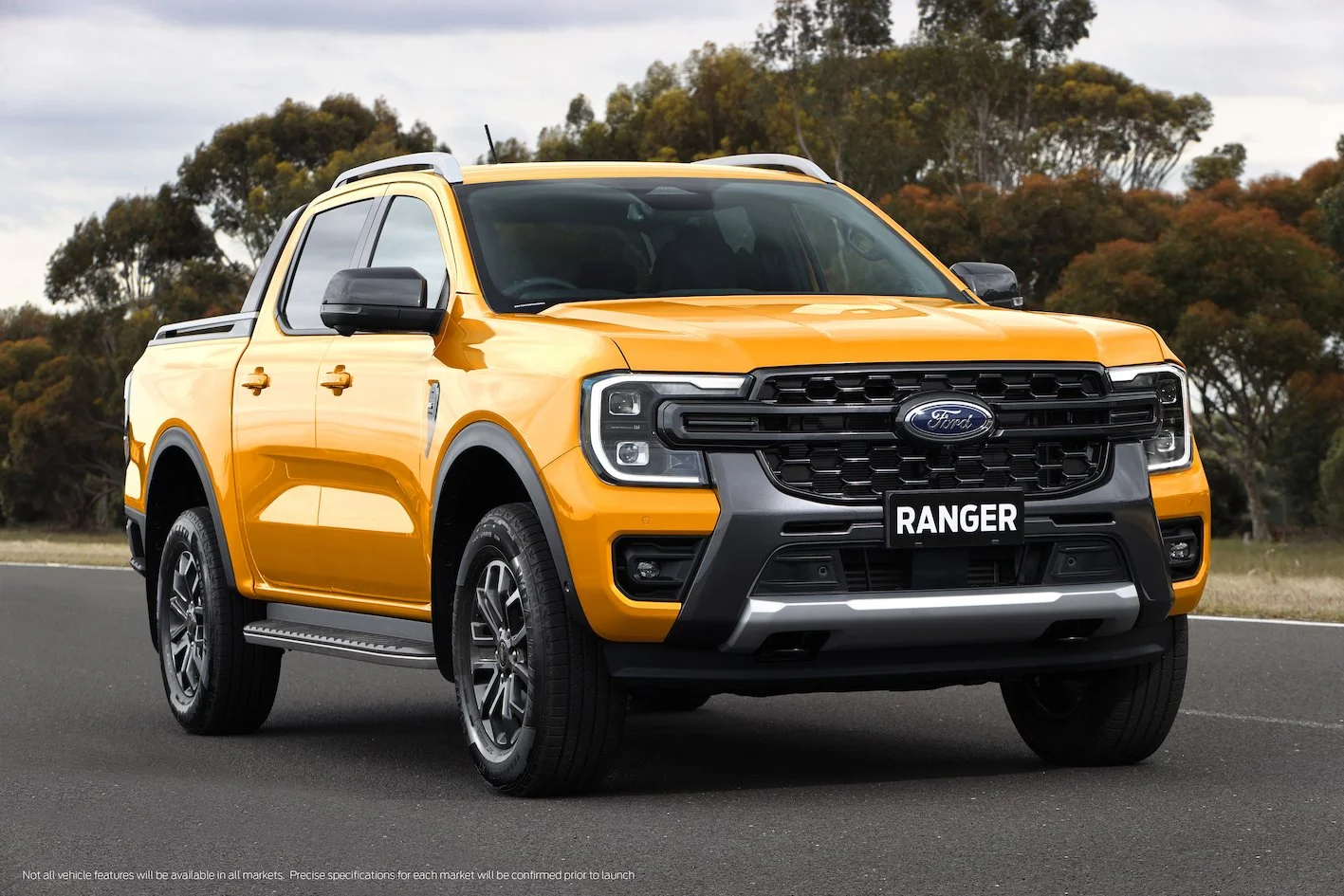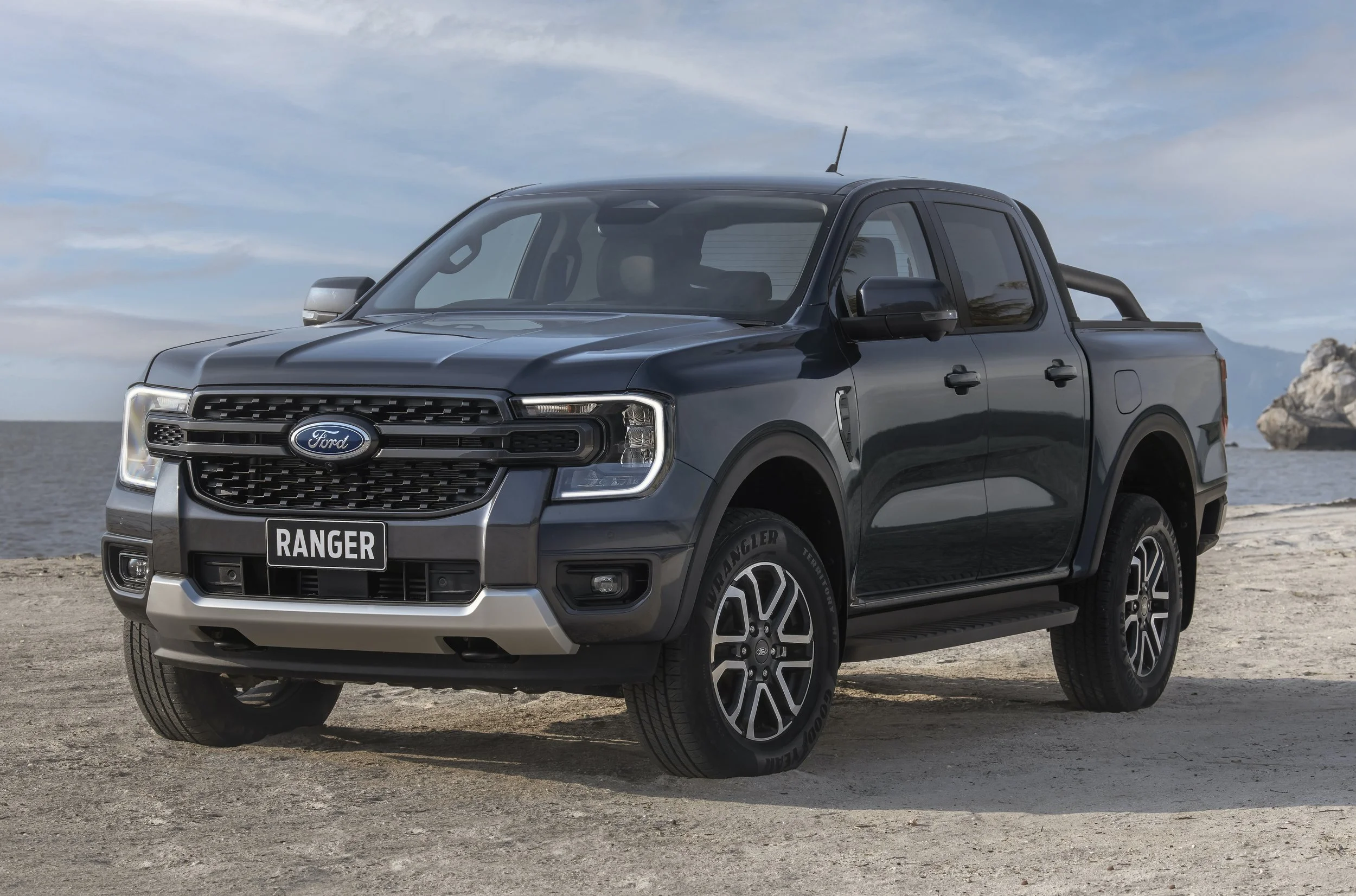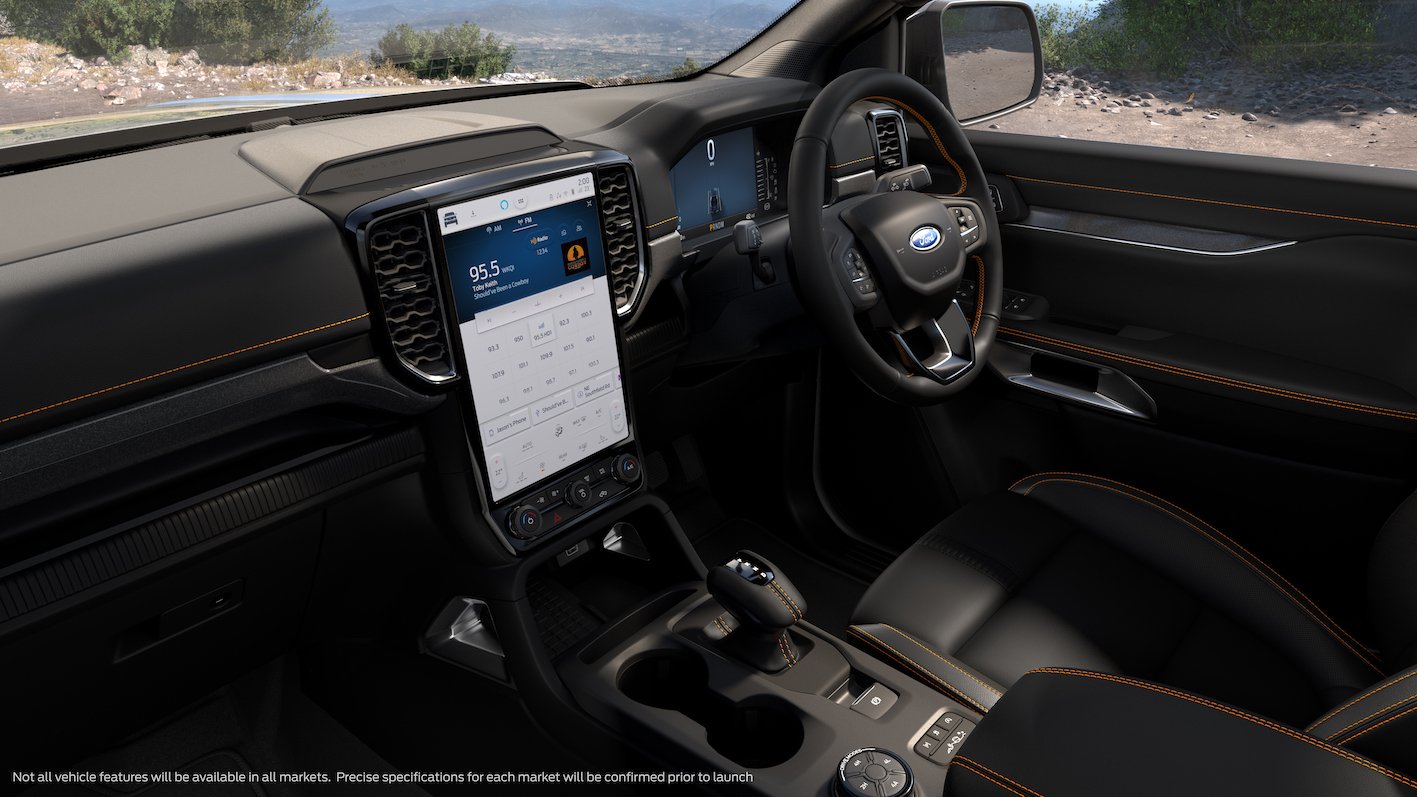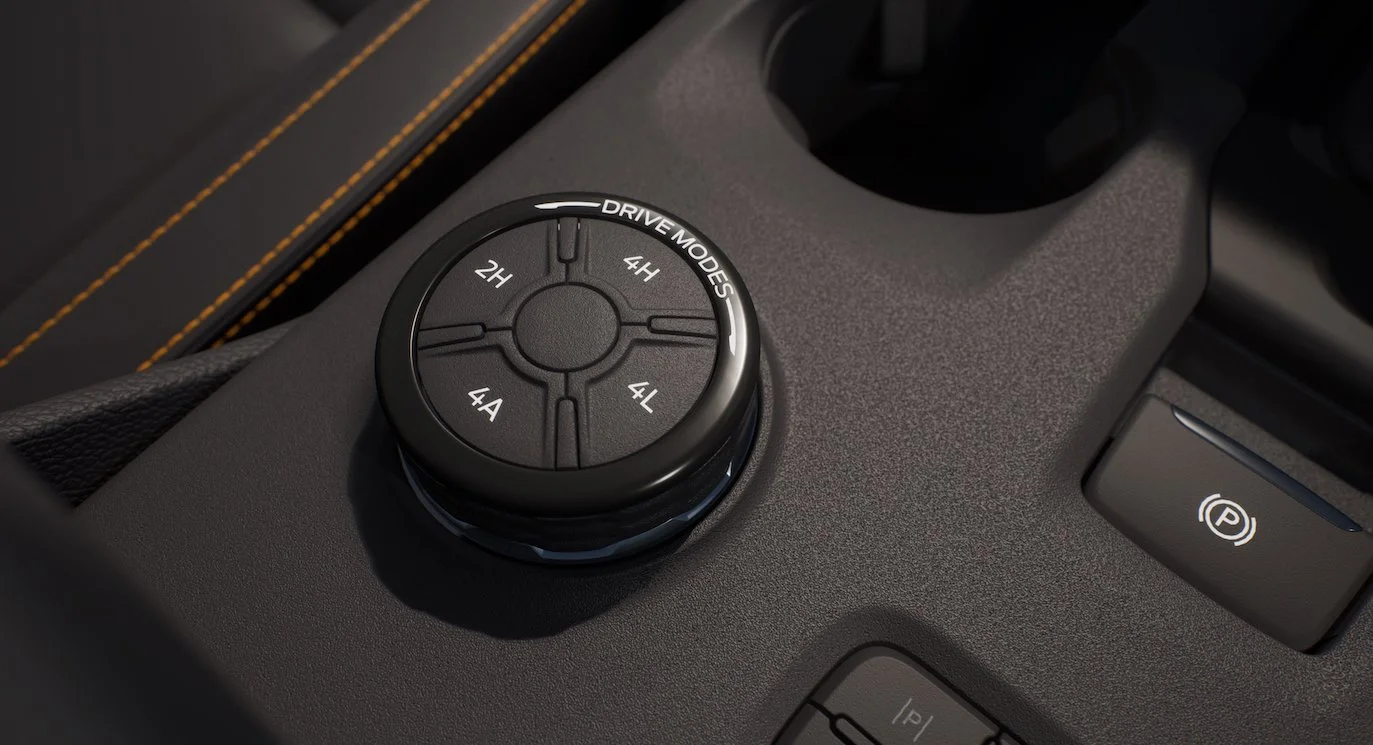Smarter, sharper new-gen Ranger revealed
/Six-cylinder oomph, high-tech features and a smarter deck design are coming for the best-selling ute in its T6.2 guise.
Wildtrak (above) heads the family and a new designation, Sport (below) is also availed.
THREE turbodiesels – a new 3.0-litre V6 and two carryover 2.0-litre fours – three grades, a new Sport delivering between the familiar XLT and Wildtrak; a massive boost in technology – including a portrait-oriented touchscreen for the overhauled cabin, extra safety and assistance systems – a whole new frontal look and a wider body, with a tray now large enough to carry a pallet.
Those are among the headline achievements Ford has divulged in revealing the next-generation Ranger, a complete makeover of the current, 2011-released T6 model to be called … T6.2.
Destined to come on sale here in mid-2022, the new generation has even more worldly ambition than the current model, a New Zealand best-seller for all but its first year of availability.
It will be sold in 180 countries and will also serve as the foundation for the next Volkswagen Amarok, also of course an international product.
Sourcing is continuing from a Ford plant in Thailand that currently supplies NZ but it’ll also be produced in South Africa, production beginning there in January.
What isn’t known? Many, many details are being kept under wraps for now, but Ford New Zealand expects to divulge a lot more within a few weeks.
In respect to drivetrains, though, Ford has said there will definitely be an electrified Ranger. But it’s not coming straight away and the brand won’t divulge what it plans to deliver; so talk of it being a plug-in hybrid remains speculative.
Ford is particularly excited by the V6, with programme manager Pritika Maharaj assuring it delivers more fully than the now-retired 3.2-litre five-cylinder. “When you drive a Ranger with the V6 turbodiesel, it feels like a much bigger truck. And it feels really tough in the sense that it's got endless power and torque, which is exactly what our customers wanted.”
Potentially that Wildtrak-bound engine isn’t the current Amarok’s six-cylinder, which now puts 190kW in all current versions sold here, but Ford’s own Power Stroke 3.0-litre V6 turbo diesel, recently bolted into Ford F150 pick-ups, where it produces 186kW and 596Nm. With this, the range-topping model be the most powerful Ranger to date.
The 2.0 inline fours are reworked versions of what Ranger has now, again in single and biturbo forms. The single turbo comes in two different performance levels. The biturbo engine “makes a more sophisticated, performance variant for customers who want more power but need to maintain fuel economy.” Raptor, of course, introduced the current line’s 2.0-litre EcoBlue twin-turbocharged four-cylinder diesel engine that produces 157kW and 500Nm. At least the V6 is married to the 10-speed transmission featuring in the current range; there’s speculation the entry 2.0-litre has a six-speed. Some markets outside our region will also see a 2.3-litre petrol.
Ford has also brought Ranger up to speed in respect to connectivity. The touchscreen, representing in 10.1-inch or 12-inch touchscreen depending on the model, complements a fully digital ‘coast to coast’ instrument panel and is loaded with Ford’s latest SYNC4 system, which comes customer-ready with its voice-activated communications, entertainment and information systems.
Additionally, there’s an embedded factory-fitted modem, allowing connectivity on the go when linked with the FordPass App, which additionally allows remote start, vehicle status check and remote lock and unlock functions via a mobile device. The modem also allows over-the-air updates.
Many of the traditional driving mode controls have been moved from the dash and centre console to their own dedicated display on the screen. It responds to the truck’s selectable drive modes and displays truck data and off-roading information as well as turn-by-turn navigation.
Ford says that, with one button press, drivers can go to Ranger’s dedicated screen for all off-road and drive modes where they can monitor the driveline, steering angle, vehicle pitch and roll angles and other controls. A 360-degree camera gives a view of what’s in front and what’s behind the vehicle, while a top-down view helps with parking.
As much as the emphasis is on all-terrain, the make says it has striven to make the cabin more car-like cabin, too, mainly through using premium soft-touch materials. The double cabs now have fold flat rear seats. Also, the model now adopts a wireless phone charging pad. Plus check out the gearstick; it’s now more like a stump.
A defined new grille and a signature C-clamp headlight treatment, which double as daytime running lights and come in halogen or LED depending on spend, are signatures of Ford’s latest look for its light trucks, you saw it first on the latest F-150. The make suggests the shoulder line down the sides and bolder wheel-arches lend Ranger a sure-footed stance.
At the back, the taillights are designed in harmony with the signature graphics on the front.
Few dimensions have been shared, but as it’s on a redevelopment of the T6 platform it will be broadly similar, save that the wheelbase and width have grown by 50mm.
As much as anything else, this is to meet a criticism of the current vehicle: That its deck just isn’t quite wide enough. Ford assure the new model can cope with loading flat some pretty fundamental items, such as a sheet of building plywood or a full-size pallet.
Ford says the loading areas became a focus of many discussions it had with T6-generation vehicle owners; it talked to thousands and says there was realisation it could do better. Accordingly, it has.
This Ranger takes a plastic-moulded bedliner and additional cargo tie down points, on steel tube rails, to provide convenient points to secure loads. Structural attachment points for canopies and other aftermarket accessories are also better integrated.
In addition to Ranger achieving zone lighting – controlled via the SYNC screen or the FordPass App – to provide 360-degree lighting to lend better visibility around the vehicle, the deck itself now has bespoke lighting under the left and right hand rails.
In addition, Ranger offers a new cargo management system designed with dividers to hold various sized items such as timber or toolboxes. Owners also can create smaller compartments to store objects, which would otherwise have to go in the cab, using a system of ultra-strong spring-loaded cleats that clip into rails bolted to each side of the cargo box. The tailgate can also double as a mobile work bench with an integrated ruler and clamp pockets to measure, grip and cut building materials.
Ranger will deliver with two different four-wheel-drive systems, the base system continuing as part-time (so it’s a rear drive on seal) and the more advanced basically a permanent all-wheel-drive, which will please VW. One standout and class-unique feature of the Amarok is that it runs constant 4WD. The four-by-fours also configure with six selectable drive modes – a provision currently only available on the Raptor.
A wider stance and the rear dampers being moved outboard means “customers experience a more consistently comfortable ride no matter if they’re carrying a full pallet, towing a caravan or just taking the family out for a drive.”
Ford says Ranger underwent “unrelenting” global testing from sub-zero to 50-plus temperatures. It says the high-strength steel frame and steel body has been conceived to meet a ‘Built Ford Tough’ standard.
There are twin attachment points to provide flexible recovery options while driving off-road, and the ability to use balance straps during snatch recoveries in deep sand and muddy areas. Ford has also teamed up with specialist off-road accessory provider ARB to provide more extras.
The model is also designed to accommodate a second battery under the bonnet so users can keep their powered camping and work appliances running for longer.
One last point: Like T6, this Ranger is a true-blue Aussie Ford. Although 2000 designers and engineers from around the world involved, the project was led by Ford’s Product Development Centre in Melbourne.























